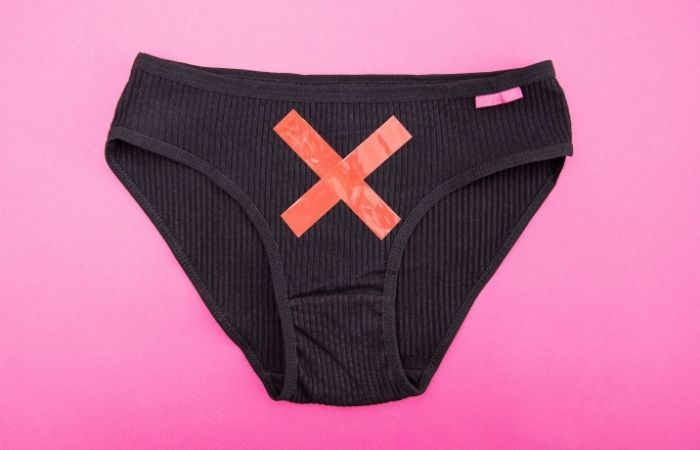Quick Answer: Trichomoniasis spreads primarily through unprotected vaginal sex, not from hot tubs, pools, or towels. The parasite can’t survive long outside the human body.
Wait, What Is Trichomoniasis?
Trichomoniasis is a sexually transmitted infection caused by a microscopic parasite called Trichomonas vaginalis. According to the CDC, over 2 million Americans are currently infected, but most don’t know it.
This parasite doesn’t spread like bacteria or viruses; it needs direct contact, typically during vaginal sex. Oral and anal sex are much lower risk, and non-sexual transmission is extremely rare.
Here’s what makes trich sneaky:
- Silent spread: About 70% of people with trich don't show any signs at all.
- Gender bias: People with vaginas are more likely to notice symptoms, while people with penises often don't have any.
- Confusing symptoms: Trich symptoms are often confused with yeast infections or UTIs because they look the same.

People are also looking for: What STDs Have Celebrities Really Had?
Can You Actually Get Trich from a Hot Tub?
Short answer: Almost certainly not. But let’s unpack why this myth sticks around.
In public health forums and Reddit threads, you’ll see it over and over: “I swear I didn’t cheat; could I have gotten trich from the gym hot tub?” The anxiety is real, but the science is clear.
According to the National Library of Medicine, Trichomonas vaginalis cannot survive long outside the human body, especially in chemically treated environments like pools and hot tubs. Chlorine kills it. Heat kills it. Dry air kills it. What doesn’t kill it? Direct genital-to-genital contact.
“I went through a whole breakup over this,” shared one anonymous poster on a sex health forum. “She thought I cheated because I tested positive, but I hadn’t slept with anyone else. Turned out she had it and didn’t know.”
This is a crucial point: Trich can live in someone for months without symptoms. If you test positive, it doesn’t always mean recent cheating, it might just mean recent testing.
This Isn’t Just Razor Burn, And Here’s Why
Think you’ve got a yeast infection that won’t go away? It might be trich. Here’s how to tell them apart:
- Yeast Infection: Thick, white discharge; itching; no strong odor.
- Trichomoniasis: Thin, frothy, yellow-green discharge; strong fishy odor; itching, burning during urination or sex.
Many people delay treatment because the symptoms are subtle or embarrassing. Some even try home remedies, thinking it’s just “something minor.” That delay can increase the risk of spreading the infection to others, or developing complications.
According to a 2021 study published in Sexually Transmitted Diseases, untreated trich increases the risk of contracting HIV, pelvic inflammatory disease, and adverse pregnancy outcomes.
“I was convinced it was a UTI,” said Monica, 27. “But the antibiotics didn’t work. My doctor finally did an STD test and called me back for treatment.”
“Can I Get Trich from a Towel?” and Other Myths That Need to Die
There’s no shortage of bad info floating around locker rooms, online forums, and even from well-meaning friends. Let’s bust the most common myths with real science and real stories.
Myth: You can get trich from a towel or toilet seat.
Reality: The parasite doesn’t survive on dry, hard surfaces. According to clinical literature from StatPearls, transmission via inanimate objects is “theoretical, not practical.”
Myth: Hot tubs and pools spread STDs.
Reality: Chlorinated water kills trichomonas quickly. Unless you're having unprotected sex in the hot tub, it’s not how this parasite spreads.
Myth: Only “dirty” people get trich.
Reality: Anyone who has unprotected vaginal sex, even once, can contract it. Hygiene has nothing to do with it. This idea is rooted in shame, not science.
“I thought only people with multiple partners got STDs,” said Jayden, 33. “I was in a monogamous relationship. Turns out she’d had it for months and didn’t know.”
Check Your STD Status in Minutes
Test at Home with RemediumTrichomoniasis Test Kit

 For Women
For Women Results in Minutes
Results in Minutes No Lab Needed
No Lab Needed Private & Discreet
Private & DiscreetOrder Now $33.99 $49.00
When Silence Is a Symptom Too
Here’s what’s wild about trich: most people don’t even know they have it. That’s how it keeps spreading.
According to the CDC's fact sheet on trichomoniasis, approximately 70% of people with the infection show no symptoms. This includes people with penises and vaginas. But the damage? Still real.
Silent infections can:
- Increase your risk of getting or spreading HIV
- Lead to preterm labor or low birth weight in pregnancy
- Cause chronic reproductive tract inflammation
Even if you feel fine, you could still be carrying and spreading trich, especially if you’re not consistently using protection or regularly testing.
“I tested because my partner started itching, not me,” said Cam, 25. “Turned out we both had it. We just caught it at different times.”
So How Do You Actually Get Trich?
Let’s get specific. Trichomoniasis spreads through genital contact, primarily vaginal sex. Here’s a clear list of what’s risky and what’s not:
- High Risk: Unprotected vaginal sex (penis-in-vagina)
- Medium Risk: Shared sex toys (if not cleaned or covered with condoms)
- Low Risk: Oral sex (very low but not zero)
- Extremely Low Risk: Hand stuff, shared towels, or touching toilet seats
The parasite lives in the urethra and genital tracts. That means direct genital-to-genital or genital-to-object-to-genital contact is required for transmission. The Mayo Clinic confirms that most non-sexual exposure scenarios (like hot tubs or public restrooms) pose virtually no threat.
“We were using a dildo we didn’t clean between partners,” admitted Dev, 29. “Didn’t even think about it. That’s how I got trich.”
What No One Tells You After the Hookup
So many people assume “no symptoms = no STD.” But trich is silent in most people, and loud in others, sometimes weeks later. Symptoms can appear days to months post-exposure, which makes tracking down the source nearly impossible without regular testing.
Here are some symptoms that should prompt a test:
- Burning: During urination or after sex
- Discharge: Yellow-green, frothy, or foul-smelling
- Itching: In or around the genitals, especially if recurring
- Bleeding: After sex without explanation
These symptoms can overlap with BV, yeast infections, or UTIs. That’s why you need a specific trich test; it doesn’t show up on general panels unless it’s included.
This is where testing matters. At-home kits like the 6-in-1 STD At-Home Rapid Test Kit include trichomoniasis in their panel, so you’re not just guessing in the dark.
Take back control of your health. Try an FDA-approved at-home STD test kit from STD Rapid Test Kits. It’s quick, private, and no appointment required.

People are also looking for: I Got Ghosted After a Hookup, Then I Tested Positive for Chlamydia
Yes, Condoms Help, But It’s Not That Simple
Condoms dramatically reduce your risk of trichomoniasis, but they’re not foolproof. That’s because Trichomonas vaginalis can infect areas not covered by a condom, like the vulva or pubic region.
Still, consistent use is your best defense. The American Sexual Health Association reports that barrier protection (external or internal condoms) can lower transmission risk by up to 70% for trich, especially when combined with regular testing and limiting exposure to untreated partners.
If you’re using toys, always:
- Wash them between partners
- Use condoms over shared toys
- Avoid porous materials that trap bacteria
For internal condoms, they’re just as effective, but underused. Some queer and nonbinary folks find them especially helpful for STI protection without relying on a partner to “wear one.”
“We thought using a condom with guys was enough,” said Ray, 24, who identifies as genderqueer. “But we weren’t being careful with toys, and that’s how I think I got it.”
Testing for Trich: What Works, What Doesn’t
Most people don’t know that trichomoniasis requires a specific test, it’s not always included in standard STI screenings.
Here are your options:
- At-home test kits: Accurate, discreet, and often include trich as part of a combo panel
- NAAT (nucleic acid amplification test): Gold standard, offered by most clinics
- Wet mount (microscope swab): Less sensitive, often misses infections
The Journal of Clinical Microbiology found that NAAT tests detect trich with over 95% accuracy, while traditional swabs miss up to half of all cases.
What About Queer Sex? Let’s Talk Honestly
Sex ed rarely tells the full story about how STDs like trich affect queer folks, and that leaves gaps in protection. While trich is most common in penis-to-vagina sex, it can absolutely be passed between people with vulvas or via shared toys.
High-risk scenarios for queer and lesbian partners include:
- Using unwashed sex toys between partners
- Sharing barriers incorrectly (like reusing dental dams)
- Manual sex with open cuts or contact with infected fluids
One 2021 study in the Journal of Women’s Health found that queer women were less likely to get screened for STDs and more likely to believe their risk was “low.” That false sense of security leads to missed diagnoses.
“We were in a closed relationship,” said Tasha, 30. “I didn’t think I needed to test again. But I did, randomly, and it turned out I had trich. I must have had it for months.”
Order Now $189.00 $490.00 Check Your STD Status in Minutes
Test at Home with Remedium
10-in-1 STD Test Kit




For all 10 tests
“I Don’t Know How to Tell Them…” – Talking About Trich
Testing positive for trich doesn’t mean you’re dirty or reckless; it means you’re informed. The next step? Telling any recent partners. It’s not fun. But it’s necessary.
Try this:
- “Hey, I tested positive for something that’s treatable. You should get tested too, just in case.”
- “I didn’t have symptoms either, but my test picked it up. It’s more common than people think.”
And remember, this doesn’t define you. It’s just information. The sooner it’s shared, the sooner everyone gets treated and protected.
You Deserve to Know, Not Just Guess
Let’s be real: most of us were never properly taught about trichomoniasis in sex ed. Maybe you heard about HIV or chlamydia in high school, but trich? Probably not. That silence is dangerous, because what we don’t name, we don’t test for.
Trich doesn’t always announce itself. It doesn’t leave obvious marks. It can look like razor burn, smell like BV, or feel like nothing. That’s what makes it such a quiet threat. But here’s the thing: it’s also completely curable, with a single round of antibiotics in most cases.
Here’s what you can do right now:
- Test regularly, especially if you have new or multiple partners
- Use condoms and barriers consistently, not just “when it feels risky”
- Clean toys and change condoms between partners and orifices
- Talk about testing with new partners, before symptoms show up
Testing doesn’t mean you don’t trust someone. It means you care enough to protect each other. And if you’re feeling shame? Let it go. You are not the infection. You’re the person taking charge of your health.
“The worst part wasn’t the trich,” said Megan, 26. “It was the spiral I went into, thinking I’d done something wrong. But I hadn’t. I was just uninformed. Now I’m not.”

People are also looking for: Can You Get Herpes in an Exclusive Relationship?
FAQs
1. Can you get trichomoniasis from a hot tub?
No. People get trichomoniasis by touching their genitals, usually during vaginal sex. The parasite doesn't do well in hot or chlorinated water.
2. Can you get trich from a toilet seat or towel?
Very unlikely. Trichomonas vaginalis dies quickly when it's not in the body and can't live on dry surfaces like towels or seats.
3. What are the signs that you have trichomoniasis?
Some people don't have any symptoms at all, but others may have itching in the genitals, burning when they pee, yellow-green discharge, or a fishy smell.
4. Is it possible for trichomoniasis to go away on its own?
Not really. While the symptoms might be gone, the infection will always stick around unless you treat it with antibiotics like metronidazole or tinidazole.
5. When do the signs of trich show up?
Symptoms usually show up between 5 and 28 days after exposure, but some people don't show any signs for months.
6. Do condoms always prevent trich?
Condoms lower the risk, but they don't eliminate it. The parasite can get into places that a condom doesn't cover.
7. Can women who have sex with women get trich?
Yes. Even in queer relationships, trich can be passed on through shared sex toys, genital contact, or fluids.
8. Are all STD tests able to find trichomoniasis?
Not always. A lot of routine tests don't do it. Ask your doctor or get a kit that has trich in it to do at home.
9. Is it possible to have trich without cheating?
Yes. Someone could have trich for months without knowing it, even if they are in a monogamous relationship.
10. How do I bring up trich with my partner?
Communication is key, so be honest and direct. Keep in mind that that trichomoniasis is very common and can be treated. If they're still worried, offer resources and suggest mutual testing.
You Deserve Answers, Not Assumptions
You might feel overwhelmed, embarrassed, or even betrayed right now, but here’s what you need to know: trichomoniasis is common, treatable, and doesn’t define your worth or integrity. Getting informed is the most powerful thing you can do.
Whether your concern started with a symptom, a rumor, or a late-night Google spiral, now you know what to look for and what to do next. Don’t wait and wonder, get the clarity you deserve.
Sources
3. STDCheck.com – STD From a Swimming Pool or Hot Tub: Why transmission is virtually impossible










